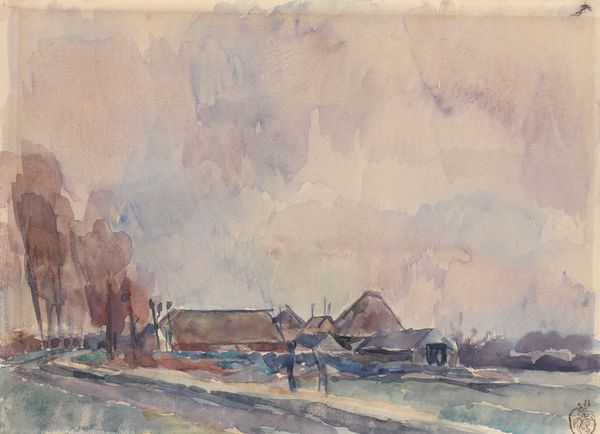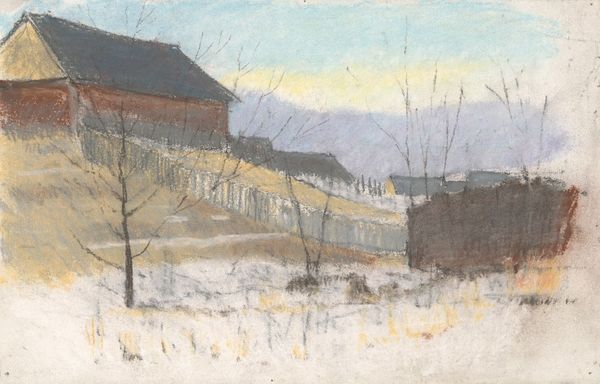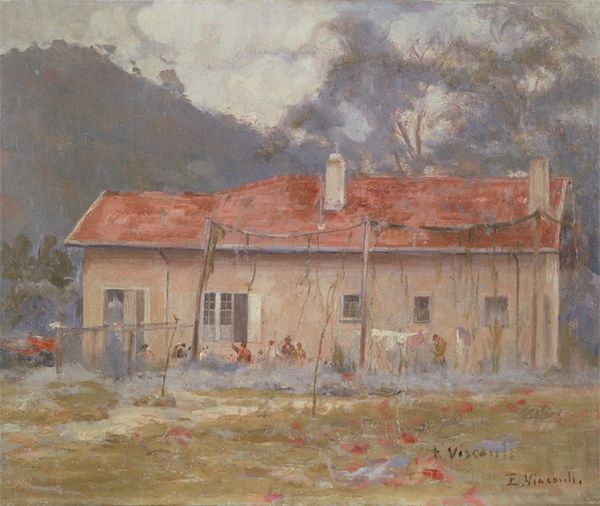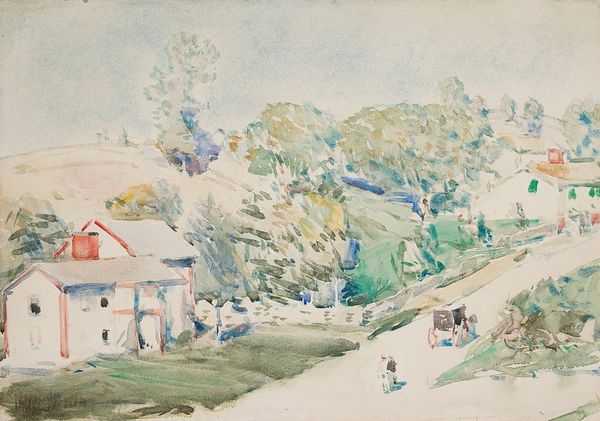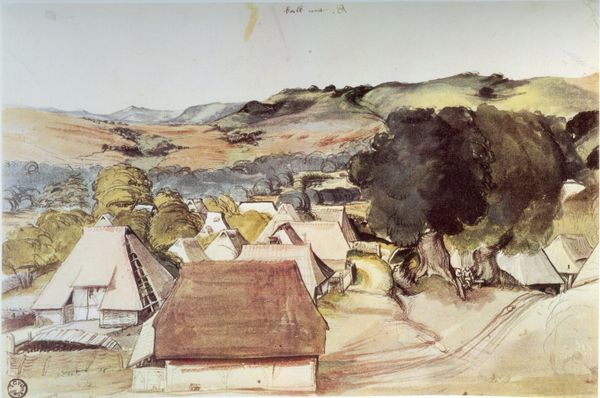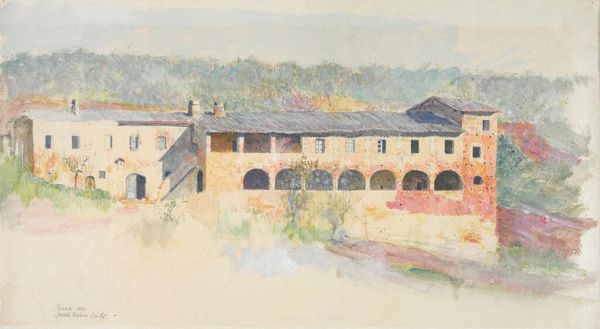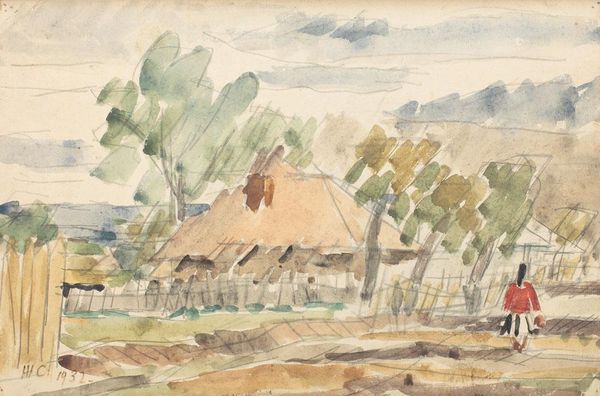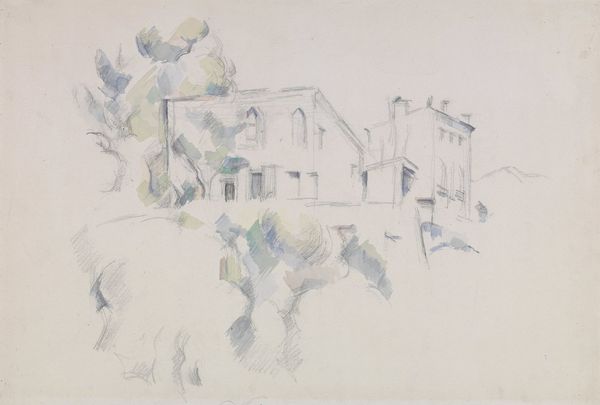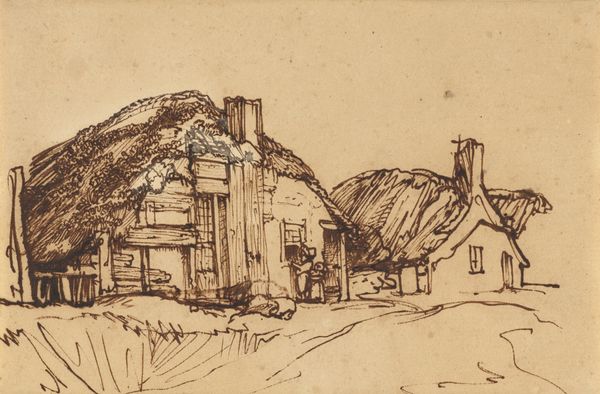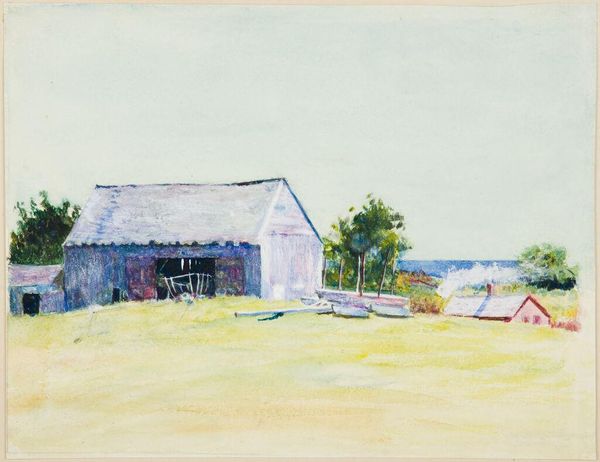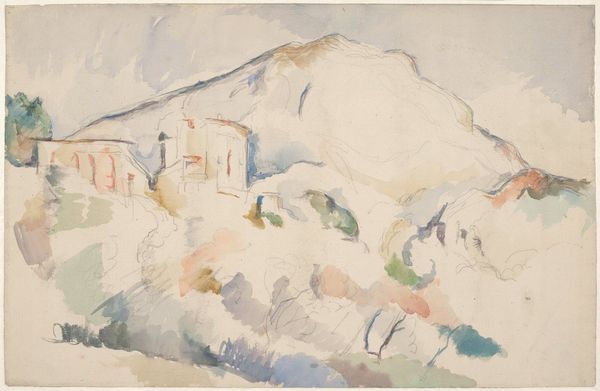
painting, plein-air, watercolor, impasto
#
painting
#
plein-air
#
landscape
#
oil painting
#
watercolor
#
impasto
#
cityscape
#
post-impressionism
#
watercolor
#
realism
Copyright: Public domain
Curator: Good day. We're standing before Paul Cézanne's watercolor from 1894, "The Lime Kiln," held here at the Musée d'Orsay. Editor: It feels unfinished, in a way. Like a dreamscape just emerging from the morning mist. It has such an atmospheric haze that envelops the industrial architecture. Curator: Yes! Cézanne often sought to capture the essence of a scene rather than photographic detail, so the feeling of it can definitely come off more hazy. It almost vibrates! The watercolor is applied in layers, letting the paper breathe beneath. Cézanne painted “en plein air”, in the open air, wanting to get that authenticity to how the colors play off the light of day. Editor: Absolutely. It’s interesting to think about landscape paintings made during the era of rapid industrial expansion and how they reflected that period of labor and the transformation of our planet. What do you notice about the lack of figures, and this towering chimney juxtaposed against the soft undulation of mountains in the backdrop? Curator: Well, in Cézanne's paintings from Aix, there is an ever-present intimacy, isn't there? He paints these working structures with such affection and a strange domesticity, I think his gaze really turns it from "landscape" into more of an intimate space. The way he renders them is like portraits of objects—almost spiritual. He imbues it with character. He often returns to the same subjects... Editor: And through this repetition, he extracts new understandings of that which we see often, rendering them in this case with an elegant sensitivity despite the polluting realities of lime kilns! This really emphasizes a key issue during this period: industrial impact versus natural serenity, showing the social landscape alongside what's deemed aesthetically pleasing. Curator: Exactly! It also gets us to re-think the landscape and that sublime concept, and really see it also for its sociological component, its working history... it’s lovely and unsettling at once. I always leave with so much more than I come to the paintings with. Editor: It really emphasizes the dual nature of so many things. Beautiful and destructive... it’s the post-industrial landscape, or maybe more specifically the transition into our current one, one in which every human gesture alters the surface of this earth. Thanks for pointing this out, what an affecting piece of art.
Comments
No comments
Be the first to comment and join the conversation on the ultimate creative platform.

